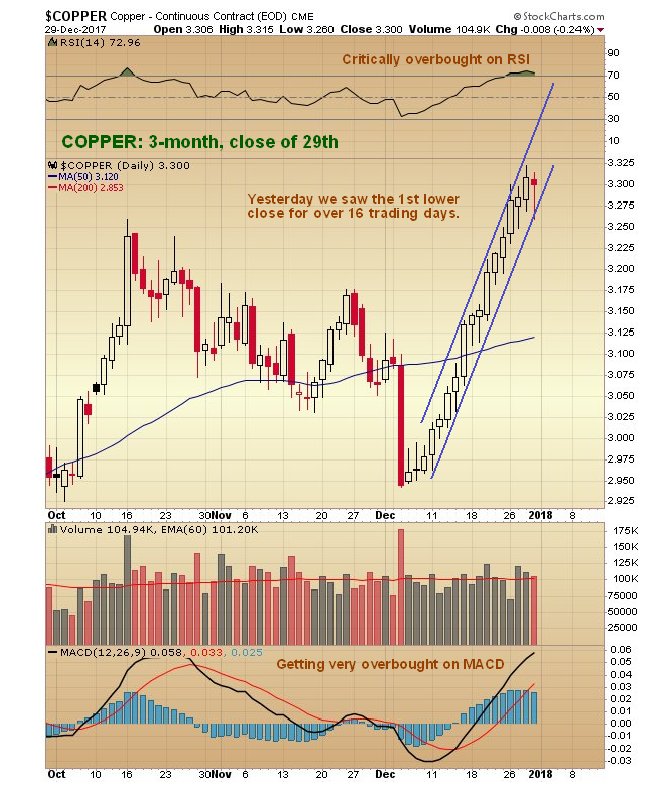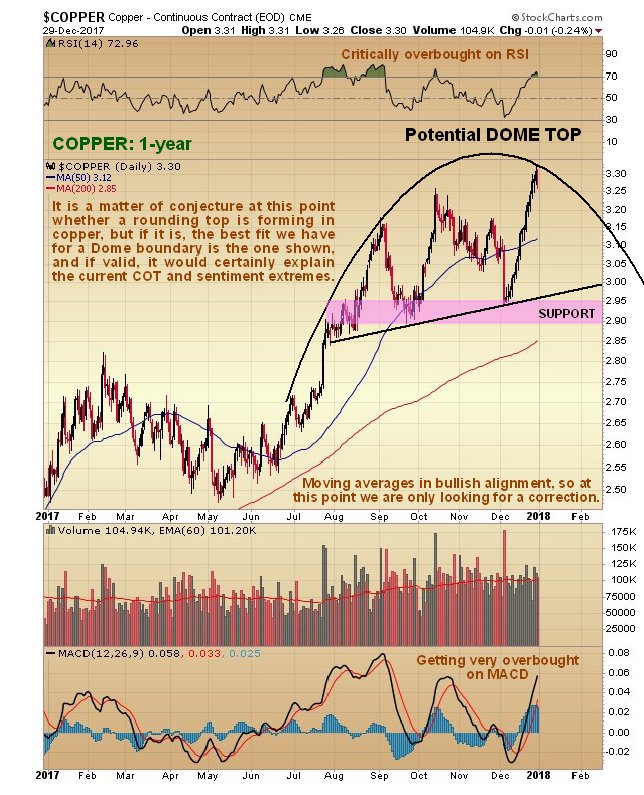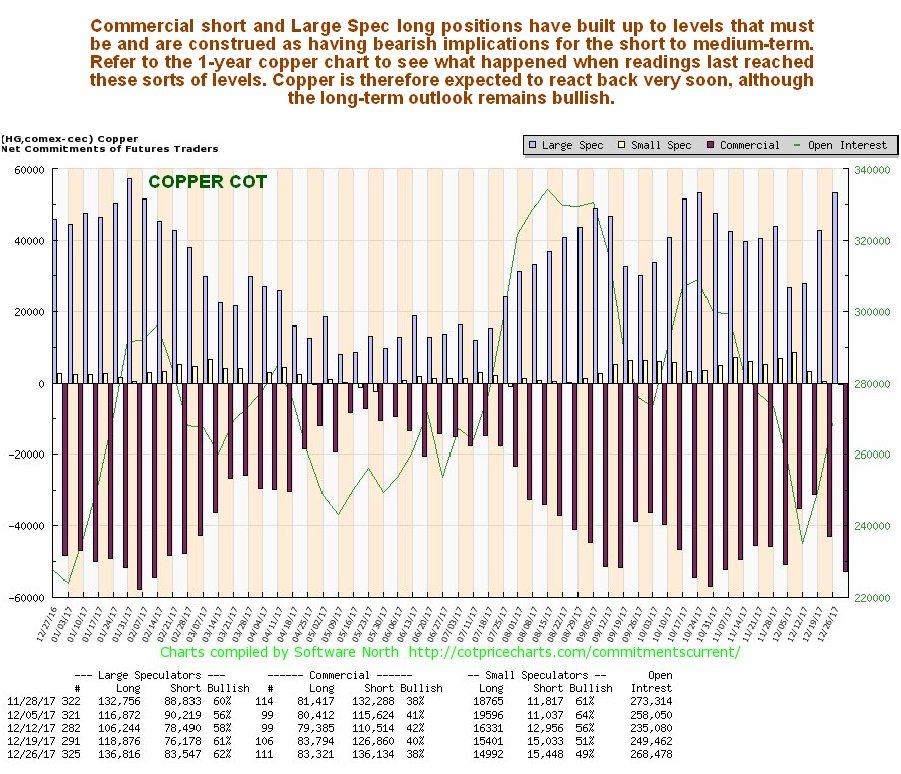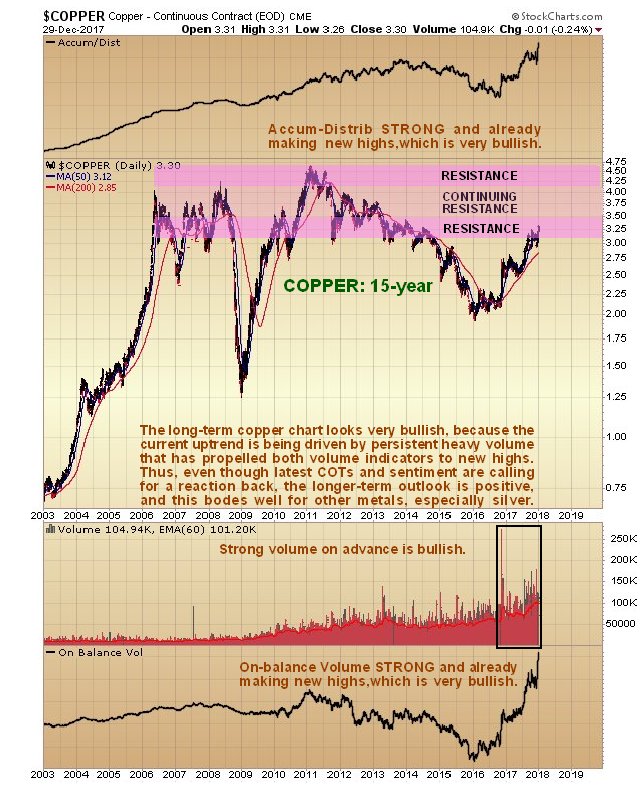For those that follow me regularly, you will know that I have been tracking a set up for the VanEck Vectors Gold Miners ETF (NYSEARCA:GDX), which I analyze as a proxy for the metals market. I believe that the GDX can outperform the general equity market once we confirm a long term break out has begun, and I think we can see it in 2018.
Recent price action
In early December, we identified a specific 20.89-21.26 support region, which, if held, could begin that major 3rd wave break out and rally we have been awaiting. But, since it would mean that this 2nd wave would have completed in an unorthodox manner, I noted that I would need to see confirmation that the market has truly bottomed.
Two weeks ago, I warned you to be prepared for large moves in the market, and the market has certainly given us a bit of excitement.

As we now know with the benefit of hindsight, the GDX bottomed at 21.27 (within a penny of our support), and began a rally which came within pennies of our first resistance region of 22.30 before it pulled back. Last weekend, I noted in my weekend market analysis to the members of The Market Pinball Wizard that the market was likely set up to continue higher, since the pullback looked corrective off the 22.30 region. During this past week, I presented my members with the set up for the market to rally to an ideal target of 22.85, and, as the close of the week, the market struck a high so far of 22.92.
(While I have been doing this for many years, I can honestly say I am still amazed at the accuracy of the turning points that Elliott Wave, coupled with our Fibonacci Pinball method, is able to provide us time and again, as we bottomed within one penny of our noted IMPORTANT support level, and the rallied to within pennies of our noted resistances.)
Anecdotal and other sentiment indications
So, after providing public analysis or over 6 years, I am still quite amazed at how accurately mathematics can identify turning points in the market. And, yes, this even applies in the metals market, about which everyone yells and screams is so manipulated.
If it was truly as manipulated as people claim, then what we have done in this market would be completely impossible, unless we were the manipulators. Yet, those that are so certain the market is manipulated always seem to be on the wrong side of price when making their claims. You would think that they would put their money on the side of the market which they believe is manipulated rather than complaining so much about it. But, I digress.
You see, markets are driven by the same natural progression and regression we see throughout all of nature. While we love to believe we understand their movements through some understanding of what we believe to be the “fundamentals” of the market, those fundamentals have all too often left investors holding the bag at the major market turns. And, for those that want to be honest with themselves, you would recognize that investors were exceptionally bullish as we were striking the 2011 highs, and exceptionally bearish as we were striking the 2015 lows due to their perspective of the fundamentals of the metals market.
As I have said so many times in so many different ways, the metals market is directed by the tone of overall investor sentiment more so than anything else. And, I am often asked what I mean by that. So, allow me to present you some insight on the topic.
R.N. Elliott, the one who discovered Elliott Wave analysis, wrote almost 90 years ago:
No truth meets more general acceptance than that the universe is ruled by law. Without law, it is self-evident there would be chaos, and where chaos is, nothing is . . . Man is no less a natural object than the sun or the moon, and his actions, too, in their metrical occurrence, are subject to analysis . . . Very extensive research in connection with . . human activities indicates that practically all developments which result from our social-economic processes follow a law that causes them to repeat themselves in similar and constantly recurring serials of waves or impulses of definite number and pattern. . . The stock market illustrates the wave impulse common to social-economic activity . . . It has its law, just as is true of other things throughout the universe. . .
“The causes of these cyclical changes seem clearly to have their origin in the immutable natural law that governs all things, including the various moods of human behavior. Causes, therefore, tend to become relatively unimportant in the long term progress of the cycle. This fundamental law cannot be subverted or set aside by statutes or restrictions. Current news and political developments are of only incidental important, soon forgotten; their presumed influence on market trends is not as weighty as is commonly believed.”
Bernard Baruch, an exceptionally successful American financier and stock market speculator who lived from 1870– 1965, identified the following long ago:
All economic movements, by their very nature, are motivated by crowd psychology. Without due recognition of crowd-thinking … our theories of economics leave much to be desired. … It has always seemed to me that the periodic madness which afflicts mankind must reflect some deeply rooted trait in human nature — a trait akin to the force that motivates the migration of birds or the rush of lemmings to the sea … It is a force wholly impalpable … yet, knowledge of it is necessary to right judgments on passing events.
During his tenure as chairman of the Federal Reserve, Alan Greenspan testified many times before various committees of Congress. In front of the Joint Economic Committee, Green- span noted that markets are driven by “human psychology” and “waves of optimism and pessimism.” Ultimately, as Greenspan correctly recognized, it is social mood and sentiment that moves markets.
Social experiments have actually been conducted which resulted in price patterns that mirror those found in the stock market. In 1997, the Europhysics Letters published a study conducted by Caldarelli, Marsili and Zhang, in which subjects simulated trading currencies, however, there were no exogenous factors that were involved in potentially affecting the trading pattern. Their specific goal was to observe financial market psychology “in the absence of external factors.”
One of the noted findings was that the trading behavior of the participants were “very similar to that observed in the real economy,“ wherein the price distributions were based on Phi (.618).
Their ultimate conclusion would surprise the most avid trader today:
In spite of the simplicity of our model and of the strategies of the single participants, and the outright exclusion of economic external factors, we find a market which behaves surprisingly realistically. These results suggest that a stock market can be considered as a self-organized critical system: The system reaches dynamically an equilibrium state characterized by fluctuations of any size, without the need of any parameter fine tuning or external driving.
Marsili was quoted as saying that “the understanding that we got is that the statistics of price histories in financial markets can be understood as the result of internal interaction and not the fundamental interaction with the external world.”
Elliott postulated that public sentiment and mass psychology moves in 5 waves within a primary trend, and 3 waves in a counter-trend. Once a 5 wave move in public sentiment is completed, then it is time for the subconscious sentiment of the public to shift in the opposite direction, which is simply a natural cause of events in the human psyche, and not the operative effect from some form of “news.”
This mass form of progression and regression seems to be hard wired deep within the psyche all living creatures. This is what we have come to know today as the “herding principle,” and the herd seems to turn at Fibonacci ratios, as supported by the studies mentioned before.
Humans are hard wired for herding within their basal ganglia and limbic system within their brain, which is a biological response they share with all animals. In fact, in a study performed by Dr. Joseph Ledoux, a psychologist at the Center for Neural Science at NYU, he noted that emotion and the reaction caused by such emotion occur independent and prior to, the ability of the brain to reason.
In a paper entitled “Large Financial Crashes,” published in 1997 in Physica A., a publication of the European Physical Society, the authors, within their conclusions, present a nice summation for the overall herding phenomena within financial markets:
Stock markets are fascinating structures with analogies to what is arguably the most complex dynamical system found in natural sciences, i.e., the human mind. Instead of the usual interpretation of the Efficient Market Hypothesis in which traders extract and incorporate consciously (by their action) all information contained in market prices, we propose that the market as a whole can exhibit an “emergent” behavior not shared by any of its constituents. In other words, we have in mind the process of the emergence of intelligent behavior at a macroscopic scale that individuals at the microscopic scales have no idea of. This process has been discussed in biology for instance in the animal populations such as ant colonies or in connection with the emergence of consciousness.
In fact, one commenter to one of my articles on Seeking Alpha made the following astute point regarding how news affects these subconscious herding trends:
Compare the market to a stream of ants marching by in, generally, a single direction. Run a stick across their path and there will be some momentary confusion and reaction to the direct stimuli but very soon afterwards the original parade of ants continues and the stimulus is forgotten.
So, based upon much research, it does seem that the market may be considered to be on a path that is determined by a mass form of herding that is given direction by social mood, as directed through the laws of nature which governs all living things, and not due to some reasoned reactions based upon perceived fundamentals. And, those that have followed the metals market through the years should know this quite intuitively, especially during the drop in the market between 2011-2015, as the fundamentals never changed during a 75% drop in silver.
Price pattern sentiment indications and upcoming expectations
Thus far, the GDX has been rather predictable, at least within pennies of our targets. But, now we are faced with another test being presented in the GDX. The question before us, which will likely be decided in the coming week or two, is if the GDX is going to continue much higher and begin to confirm that the larger degree 3rd wave rally has begun, or if we will roll over to extend this 2nd wave pullback into early 2018.
But, I will need to see the GDX break through the 23.30 region for me to begin to become a believer that the more immediately bullish potential will be seen. Until such time, I remain quite cautious as we now reside at a resistance point which can turn us down again into early 2018 to extend this pullback off the September high.
Again, my intention is to provide you a road map for impending market action based upon what I am seeing in the market at the time of my writing this article, and I am using the GDX as my proxy for the metals market. But, overall, I am looking for a very bullish 2018 in the metals complex once we complete this 2nd wave pullback.
By Avi Gilburt via ElliotWaveTrader.net

























